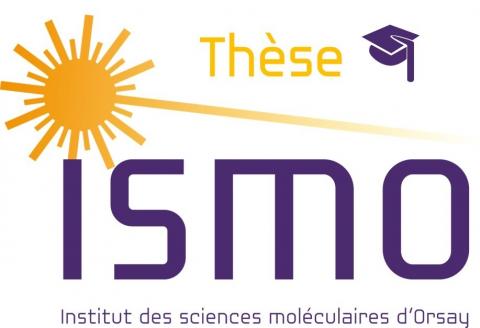
Soutenance de thèse d'Anam Fatima, en mode HYBRIDE
Soutenance de thèse d'Anam Fatima
Fast and Ultrafast Time-Resolved Spectroscopy on Photoactive Systems : Toward Solar Energy Conversion
Understanding the mechanism of the relaxation pathways upon photoexcitation is a decisive step for improving photoactive systems for applications in solar energy conversion. In this context, our work provides fundamental insights into the photophysical processes (inter- or intramolecular electron, energy transfer, etc.) in organic and inorganic photosensitizers coupled with electron acceptors or photocatalytic platforms. On the one hand, we studied intramolecular photoinduced electron/or energy transfer processes within all organic [BODIPY]boron-dipyrromethene-[C60] fullerene-based covalently-linked donor-acceptor systems. On the other hand, we investigated excited state dynamics of a new class of noble-metal-free inorganic photosensitizers (i.e., metal halide clusters) in combination with different polyoxometalates (POMs) as photocatalytic platforms. Moreover, combining the best of the two ; covalently linked organic-inorganic hybrid systems that utilize the electron affinity of the POM for catalytic purposes while using the organic residue (i.e., BODIPY) as a photosensitizer was photophysically investigated. Fast and ultrafast time-resolved spectroscopic methods, including femtosecond and nanosecond time-scale pump-probe transient absorption, time-correlated single photon counting, and time-resolved emission allowed the monitoring of different photoinduced processes within these photoactive systems in solution. The charge separation and relaxation dynamics within these donor-acceptor systems are particularly interesting for developing artificial light-conversion devices.
Contact pour demander le lien :
http://www.ismo.universite-paris-saclay.fr/spip.php?article2784
Soutenance de thèse d'Anam Fatima
Fast and Ultrafast Time-Resolved Spectroscopy on Photoactive Systems : Toward Solar Energy Conversion
Understanding the mechanism of the relaxation pathways upon photoexcitation is a decisive step for improving photoactive systems for applications in solar energy conversion. In this context, our work provides fundamental insights into the photophysical processes (inter- or intramolecular electron, energy transfer, etc.) in organic and inorganic photosensitizers coupled with electron acceptors or photocatalytic platforms. On the one hand, we studied intramolecular photoinduced electron/or energy transfer processes within all organic [BODIPY]boron-dipyrromethene-[C60] fullerene-based covalently-linked donor-acceptor systems. On the other hand, we investigated excited state dynamics of a new class of noble-metal-free inorganic photosensitizers (i.e., metal halide clusters) in combination with different polyoxometalates (POMs) as photocatalytic platforms. Moreover, combining the best of the two ; covalently linked organic-inorganic hybrid systems that utilize the electron affinity of the POM for catalytic purposes while using the organic residue (i.e., BODIPY) as a photosensitizer was photophysically investigated. Fast and ultrafast time-resolved spectroscopic methods, including femtosecond and nanosecond time-scale pump-probe transient absorption, time-correlated single photon counting, and time-resolved emission allowed the monitoring of different photoinduced processes within these photoactive systems in solution. The charge separation and relaxation dynamics within these donor-acceptor systems are particularly interesting for developing artificial light-conversion devices.
Contact pour demander le lien :
http://www.ismo.universite-paris-saclay.fr/spip.php?article2784
